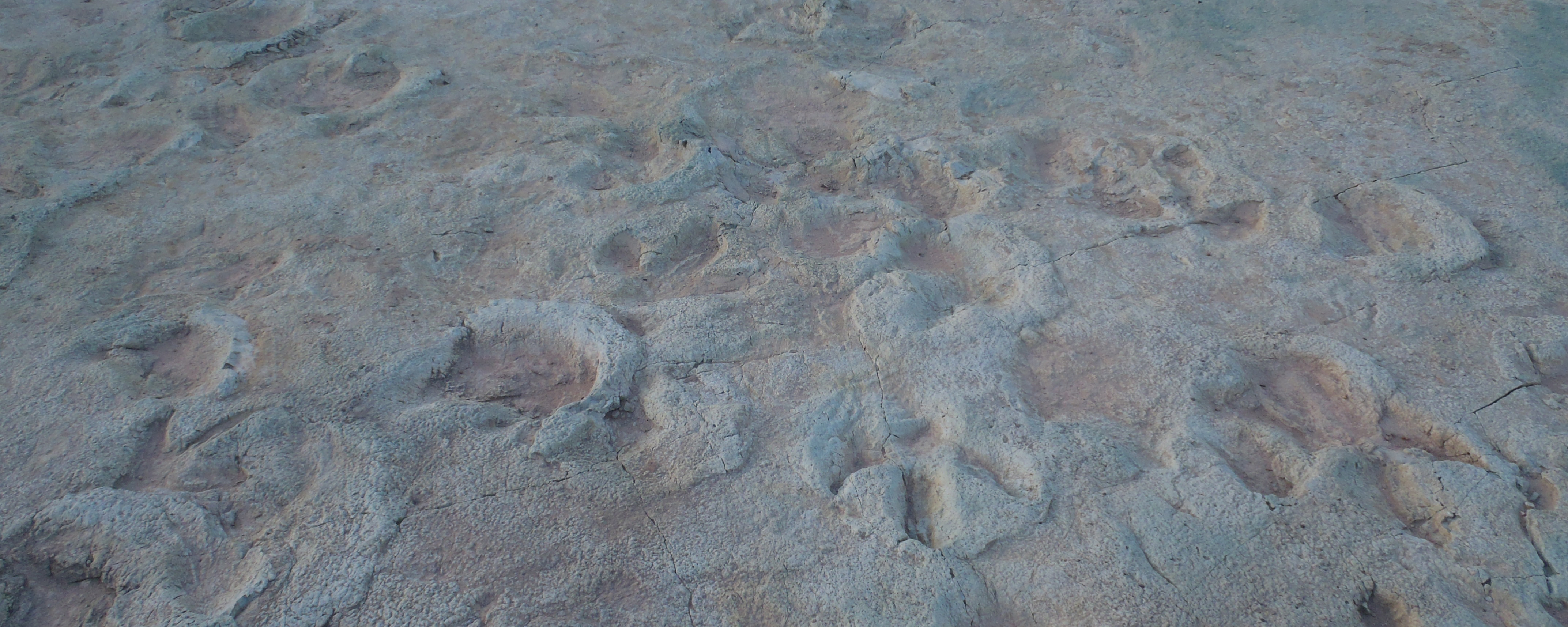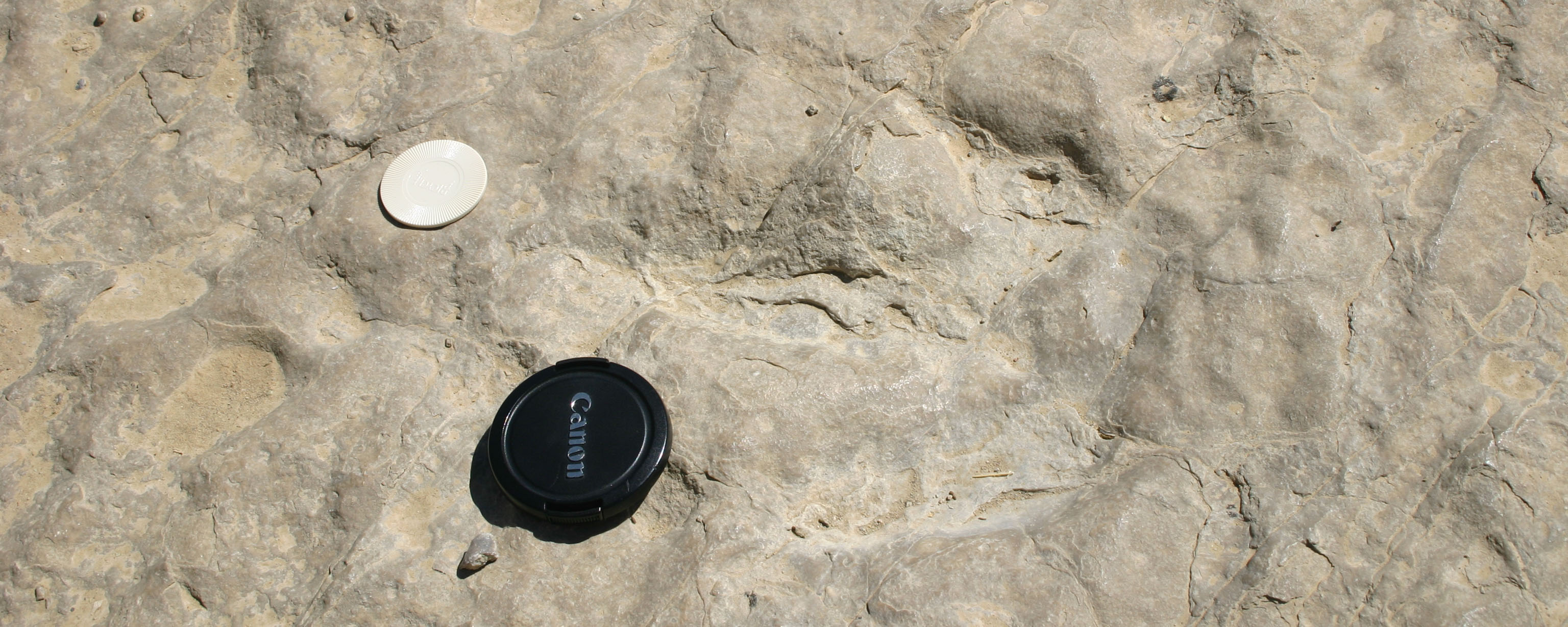


Key Points:
•Ichnology is the study of trace fossils.
•Ichnotaxa are named trace fossils: they technically are names for the objects themselves, not for the biological species which made them.
•The most commonly studied dinosaur trace fossils are footprints. Although it is often difficult to assign an ichnofossil to a particular biological species, we can often tell the larger clade to which it belonged.
•Trackways allow us to estimate the speed at which a dinosaur was moving.
•Trace fossils can also be used to study other parts of dinosaur behavior: for instance, if they were gregarious; how the fed (by looking at bite marks or coprolites); etc..
An individual footprint represents:
Footprints give direct information about the soft tissues of the bottom of the foot, and about the natural position of the toes.
Trackways, however, give even more data. By measuring the stride length, and estimating hip height, the speed of the dinosaur at the time of that trackway can be calculated. These data tend to show dinosaurs walking around at speeds comparable to modern large-bodied mammals.
However, trackways do have some problems:
Footprints and trackways can, however, reveal the presence of dinosaurs not yet known by body fossils (such as Middle Jurassic North American dinosaurs).
An interesting new discovery in ichnology is that Mesozoic dinosaurs (like extant birds) did not have discrete gaits like walk-jog-run or walk-trot-canter-gallop. Instead, they had a continuous transition of speed, stride length, and step width.
There are even traces of swimming dinosaurs! Some tracks show just long scrapes from the tips of the claws of theropods: these are paced and arranged in such a fashion that could only be caused by the dinosaur being buoyed up in the water.
There is a whole discipline of ichnotaxonomy: the naming of trace fossils. However, it must be remembered that these are sedimentological entities, not biological entities: the same animal can produce tracks given entirely different ichnotaxonomic names if it is walking slowly or running; on soft mud or hard mud; if adult or juvenile; etc.
One interesting note: almost no dinosaur trace fossil shows tail drag marks: this was some of the first evidence that dinosaurs held their tails up above the ground.
Trace fossils can help us understand something about group behavior. A recent study of Alaksan hadrosaurs showed many individuals moving in the same direction at the same time (based on the similar quality of footprint preservation.) Additionally, by counting up the trackways of different sizes, it helped to give an estimate of the relative fraction of the herd of different growth stages.
To Next Lecture.
To Previous Lecture.
To Lecture Schedule.
